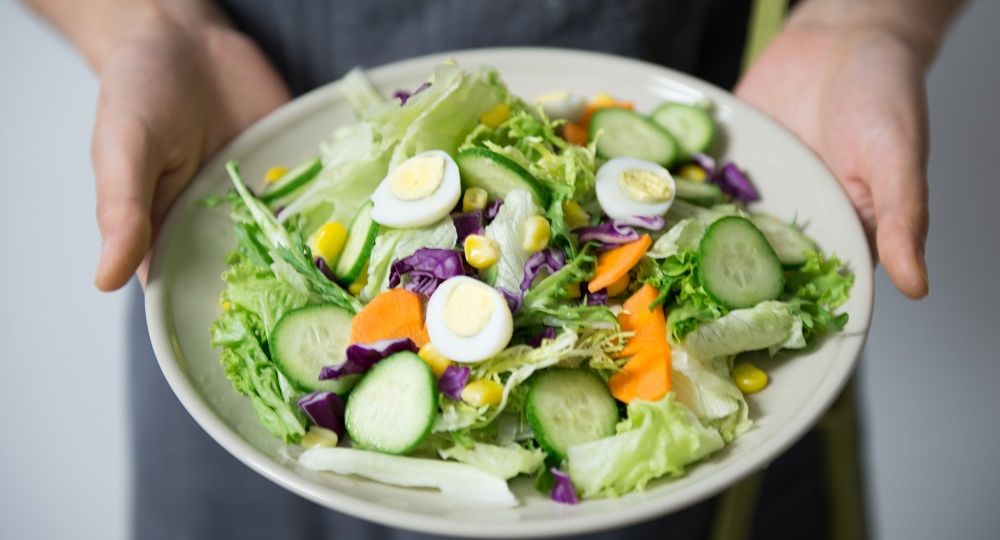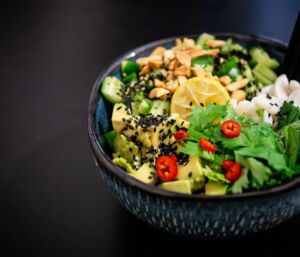
HEALTH AND NUTRITION Delhi NCR
Nutrition is all about Healthy and a well Balanced Diet. In other words we can say that “nutrition is the process of consuming food and converting it into energy” It’s the interaction between nutrients and the biological process of a living being. Good nutrition is the basic key for a healthy lifestyle.
CONCEPT OF BALANCED DIET
A Balanced diet is a diet that contains all nutrients (macro and micro) in adequate quantities. A diet that provides all the nutritional requirements of a living being. Balanced diet comprises a variety of foods from the different food groups – specifically: vegetables and fruits; protein (meat, fish, eggs, beans, soy); dairy (low-fat milk, cheese, yogurt); carbohydrates (starchy foods like rice, pasta, potatoes and bread wholegrain or whole wheat varieties); and a small quantity of healthy fats(nut butters, olive oil, avocado).
https://livenutrifit.store/
ESSENTIAL MACRO-NUTRIENTS FOR A HEALTHY BALANCED DIET
| S.no | Nutrients | % of daily calories | Function |
| 1 | Carbohydrates | 45-55 | Energy giving |
| 2 | Protein | 10-35 | Helps in tissue growth and body building |
| 3 | Fat | 20-35 | Energy stores and hormone synthesis |
| 4 | Fiber | – | It helps in regulation of blood sugar levels and bowel movement |
- CARBOHYDATRES: Carbohydrates are the main nutrients found in food products; it’s the basic fuel to run the body. Carbohydrates basically consist of 3 main things like: sugars, fibers and starches. In simple words we can say carbohydrates are simple sugar molecules. A body breaks down carbohydrates into glucose and this end product- glucose is the main source of energy for our body. Examples include: Breads, whole grains, potatoes, corn, baked food products (biscuits, cookies, cake etc), carbonated beverages.
- Proteins: Proteins are basically composed of “amino acids”. It helps in repairing and building of body tissues as well as it maintains fluid balance. It provides the basic structural framework to the body. Proteins are present in all living beings as enzymes, hormones and antibodies. In simple words we can say proteins are the building blocks of muscle mass. Examples are: Legumes and lentils, poultry, lean meats, dairy and dairy products and nuts and seeds.
- FATS: Fats help in providing energy to the body, it acts like a cushion and protects our internal organ from any mechanical injury. It supports cell growth and also helps the body to absorb vital nutrients from food. Our body stores fat basically for environmental protection and provides warmth and energy to perform different tasks. Fats, just like carbohydrates are also known as- energy-giving nutrients. Different forms of fats are: Saturated and unsaturated fats. Examples are: butter, avocados, olive oil, nut butters, nuts and seeds, dairy products.
- FIBERS: Fiber is basically the in-digestible portion of food derived from plants, it helps in creating the bulk and hence clearing the stomach. It is widely obtained from fruits, vegetables and the outer covering of all cereals and pulses. Fiber helps the food to pass out easily through our digestive system thus preventing constipation. There are two types of fiber: 1) soluble fiber- it dissolves in water and forms a gel like material, Examples are: oats, beans, apples, barley, psyllium husk etc. 2) Insoluble fiber- it helps to add bulk to the stool, Examples are: wheat bran, whole grains, vegetables etc.
ESSENTIAL MICRO-NUTRIENTS FOR A HEALTHY BALANCED DIET
Micro-nutrients are classified into two major groups:
- Vitamins- Vitamins have an important role in bodily function like digestion, immune mechanism, controlling body metabolism, growth and development.
- Vitamins are further classified into two categories: 1) fat soluble vitamins 2) water soluble vitamins
- FAT SOLUBLE VITAMINS: These vitamins are basically stored in the body’s fatty tissue (adipose tissue) and in the liver. Fat soluble vitamins are naturally absorbed along with the fats in the diet. The body does not need these vitamins on a daily basis as they are stored in the liver when not required. Types of fat soluble vitamins are: vit. A, D, E, K. Dietary sources of fat soluble vitamins include: fish liver oil, beef liver, dairy and dairy products, cruciferous vegetables, colored fruits and veggies.
- WATER SOLUBLE VITAMINS: As the name suggests water soluble vitamins are easily transported to the body tissues but they are not stored in the body, as they are easily excreted out from the body. There are 9 water soluble vitamins namely: vitamin b- complex, vitamin c and biotin. Dietary sources of water soluble vitamins include: whole grain and cereals, dairy and dairy products, poultry and fortified grains.
- Minerals-Minerals have an important role like maintaining bone and muscle health, heart and brain working properly. Minerals are needed for our body to develop and function normally. Those minerals essential for good health which includes: calcium, phosphorus, magnesium, iron, zinc, chromium etc. Minerals are basically found in foods like: meat, cereals, fish, dairy and dairy products, nuts and fruits and vegetables.
WHAT ARE THE CONSEQUENCES OF NOT HAVING A PROPER BALANCED DIET ?
- Nutritional deficiency: This kind of deficiency occurs when the body is not getting enough of vital nutrients like carbohydrates, fats, proteins, fiber, vitamins and minerals. There are number of diseases that are caused by nutritional inadequacy like:
- Protein energy malnutrition(PEM): Kwashiorkor and Marasmus
- Anemia
- Goiter
- Rickets and Osteoporosis
- Scurvy
- Protein energy malnutrition: It’s a type of malnutrition that is defined as pathological symptoms arising from subsequent lack of dietary protein and calories. There is an insufficient protein and energy intake from an individual’s diet. There are two categories of PEM: Kwashiorkor and marasmus. Sources include: dairy and dairy products, lean meats and poultry etc.
- Anemia: Anemia is a lack of blood, in other words we can say that there is a decrease of red pigment also known as hemoglobin in our red blood cells (RBCs). Hemoglobin is important to carry oxygenated blood to different cells. Sources include: green leafy vegetables, beets, organ meats, pomegranate seeds.
- Goiter: Goiter occurs due to lack of iodine in our diet. Goiter is the enlarged thyroid gland. Sources include: Table salt, sea food, dairy, eggs and lean meats.
- Rickets and Osteoporosis: Rickets basically is a condition that mostly affects bone growth and development in kids, hence weak bones can lead to bone deformities on the other hand adults can experience a similar condition known as osteoporosis or softening of bones. Sources include: natural sunlight, fish oil, dairy products, egg yolk and fortified foods.
- Scurvy: It’s a vitamin c deficiency disease causing general weakness, gum diseases and skin issues in the body. Sources includes: Citrus fruits ( amla, orange, lemon), cruciferous vegetables etc.
BODY MASS INDEX (BMI)
BMI is a parameter/measurement that relates body weight to the height. It is used to measure total body fat and categorized a person into different categories like: Underweight, normal, overweight, obese.
| S.no | BMI | CLASSIFICATION |
| 1 | <18.5 | underweight |
| 2 | 18.5-24.9 | Normal |
| 3 | 25-29.9 | Overweight |
| 4 | 30-34.9 | Obese |
FAQs
-
Define Nutrition?
Ans- Nutrition is the process of consuming food and converting it into energy. It’s the interaction between nutrients and biological process of a living being. Good nutrition is the basic key for the healthy lifestyle
-
What is healthy balanced diet?
Ans- A balanced diet is a diet that contains all nutrients (macro and micro) in adequate quantities. A diet that provide all the nutritional requirements of a living beings.
-
What are essential macros and micros in a balanced diet?
Ans- Essential micro-nutrients are- Carbohydrates, protein, fiber and fats.
Essential macro-nutrients are- Vitamins and minerals.
-
Define Obesity?
Ans- It’s a complex disease which involve excessive amount of body fat, it’s a metabolic problem that increases the risk of having life threatening disorders like diabetes, cardiovascular diseases, hypertension, hyperlipidimia etc.
-
Define BMI?
Ans- BMI is a parameter/measurement that relates body weight to the height. It is used to measure total body fat and categorized a person into different categories like: Underweight, normal, overweight, obese.
-
What are the different types of nutritional deficiency?
Ans – PEM, Goiter, Anemia, Ricketes/ oesteoporosis, scurvy .

